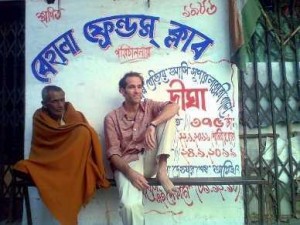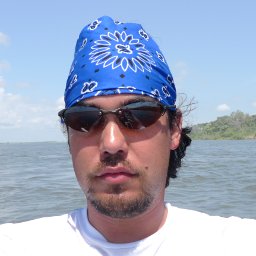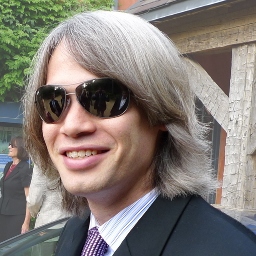Dimagi Fellow featured from India

 Dimagi fellow Derek Treatman was featured in a French article (193KB PDF download) about his work and travels in India related to the Dimagi CommCare-ASHA work.
Dimagi fellow Derek Treatman was featured in a French article (193KB PDF download) about his work and travels in India related to the Dimagi CommCare-ASHA work.

 Dimagi fellow Derek Treatman was featured in a French article (193KB PDF download) about his work and travels in India related to the Dimagi CommCare-ASHA work.
Dimagi fellow Derek Treatman was featured in a French article (193KB PDF download) about his work and travels in India related to the Dimagi CommCare-ASHA work.

As an American company, Dimagi has access to resources and technical expertise that can help effect change. However, we aren’t the real change-makers; our goal is to empower people to make their own change. I was lucky enough to see this in action on World AIDS Day in Dodoma.
Since February, Dimagi and its partners, ITIDO and the University of Washington, have been working with a growing group of Community Health Volunteers (CHVs) in Dodoma, Tanzania. These women live in the communities they serve, and their only required skill is literacy. We arm them with Nokia phones, applications developed on Dimagi’s CommCare platform, and some basic training. Every month they pay a visit to each of the 100 households in their area, using CommCare applications to collect data and dispense education. In return, we give them 5,000 Tanzanian Shillings (or $3.41) per week, which doesn’t go very far even in Tanzania.
Given this little bit of investment, these women quickly started to realize their potential. On August 2nd, they formed their own association, Miyuji Ipagala Chamwino (MIC), named for the three regions they serve. MIC, now a registered Tanzanian association, has a strong organizational structure and highly motivated sub-committees. Members give 1/5 of their weekly earnings to the MIC treasurer, who puts it in the association’s bank account. They use this account to give each other small loans; many women have started their own small businesses this way. The development committee is now looking into starting a MIC business.
December 1 was World AIDS Day. None of the CommCare applications in Dodoma are specific to AIDS, though it’s clearly an issue that affects the CHVs and their communities. MIC took this opportunity to head up its own project. After some debate, members voted to use MIC funds to buy some small gifts, which they planned to give out during a visit to the Dodoma hospital.
But they didn’t stop there. They organized regional government officials, a representative from the Red Cross Chamwino office, and a reporter from the Tanzania Broadcasting Company (TBC) to join the event. The head official from Miyuji, who also happens to be a UNICEF regional coordinator, was so impressed with the CHVs that he pledged transportation to take them to the hospital, as well as 100 blankets to give out as gifts. Everyone wanted to be part of the event.
At the hospital, the CHVs talked with patients and gave out the gifts. The TBC reporter interviewed patients, the head of the hospital, and local politicians alongside representatives from MIC. It was a publicity bonanza, raising awareness for World AIDS Day and increasing the CHVs credibility in the community. These women proved to their community, to Dimagi, and to themselves that they are change-makers.
The weekly CHV meeting opens with a prayer. It’s usually about the same every time, but a couple months ago, the MIC Chair, Salma, did something different. She got down on her knees and thanked God for her work. Before, she said, she was a typical Tanzanian woman, a housewife. She earned no respect from her community or her husband. Now, she has her own phone that she uses to do important work. People in her community know and respect her, and her husband sees she has value. She sees she has value. This was a blessing she never expected.

Dimagi’s BHOMA project was featured as a case study on couchone today. In it, we discuss how a technology called CouchDB was used to build the BHOMA system. You can read the full text of the case study below or on couchone’s page at http://www.couchone.com/case-study-dimagi.
–
Dimagi: A Case Study
BHOMA (Better Health Outcomes through Mentoring and Assessments) is a large research project tasked with improving maternal and child mortality rates in rural Zambia through standardized interventions in clinic care and community health. This requires building a distributed health data capture system, designed and implemented by Dimagi and CIDRZ. This initiative faces many of the same technology challenges encountered in low-resource Africa: limited computer resources, intermittent power, and above all, extremely unreliable internet.
Dimagi needed to leverage the most common modern communications device in many rural communities – the cell phone. But they faced a major hurdle: How to get important and timely patient information from clinics (with no reliable internet connection), to health workers in small communities so they could follow-up with patients in their area. Further, they had to solve how to get information collected on cell phones back to the clinics to monitor patient outcomes.
Solution
Dimagi became interested in CouchDB after learning about its replication technology. They needed a fully off-line system for each of their clinics, because the only network connection any of them had was an unreliable GPRS modem on the local cellular network. Network outages and latency could not be allowed to disrupt clinic operations.
By standing up a lightweight server at each clinic, backed by a CouchDB datastore, BHOMA was able to ensure constant uptime in the clinics – providing power was up. Each clinic replicates over the modem’s connection to their national CouchDB database. Because of CouchDB’s continuous replication and optimized synchronization, Dimagi didn’t have to worry about writing complicated sync protocols. Filtered replication allowed them to send only the appropriate data to each clinic, drastically reducing the bandwidth required to sync with the central server. The two-way replication also allowed for data collected on CHWs’ cell phones to propagate back to the clinic, for timely patient updates.
Results
Dimagi became interested in CouchDB after learning about its replication technology. They needed a fully off-line system for each of their clinics, because the only network connection any of them had was an unreliable GPRS modem on the local cellular network. Network outages and latency could not be allowed to disrupt clinic operations.
By standing up a lightweight server at each clinic, backed by a CouchDB datastore, BHOMA was able to ensure constant uptime in the clinics – providing power was up. Each clinic replicates over the modem’s connection to their national CouchDB database. Because of CouchDB’s continuous replication and optimized synchronization, Dimagi didn’t have to worry about writing complicated sync protocols. Filtered replication allowed them to send only the appropriate data to each clinic, drastically reducing the bandwidth required to sync with the central server. The two-way replication also allowed for data collected on CHWs’ cell phones to propagate back to the clinic, for timely patient updates.

Dimagi was awarded one of eight development innovation ventures grants from USAID. The project will support our continued effort to adapt our CommCare platform for wide-scale use within the Accredited Social Health Activist (ASHA) program in India. More information about enrolling on our advisory committee or becoming a beta testing will be released shortly.

Ten blank, staring faces answered my question for me, ‘Who has ever used a computer before?’
It took some thought, a bit of trial and error, some creativity, and lots of patience during my first week of trainings in Zambia.
We are installing a data entry system using touch screen computers in rural Zambian clinics. The touch screen is connected to a server that uses the local cell network to communicate with a central server in the capital, relaying messages back and forth between clinics and the cell phones of Community Health Workers (CHWs) – members of the community trained in basic first aid and health care, who walk or bike between villages referring the sick to the clinic and following up with patients sent home from the clinic to find out whether or not they got better. The week encompassed training both the clinic workers on entering paper forms into a touch screen computer, and teaching CHWs how to use their phone to electronically record referrals and follow ups.
Many of those attending the trainings traveled incredible distances – biking up to 25km one way from home – getting up at 4am to be somewhere by 7:30am – hoping to get a meal or some sort of sustenance at the training session. Early morning energy and enthusiasm quickly faded mid afternoon as people started thinking about the journey home and their stomachs began to grumble. This left a short window within which to train. I discovered that a large chunk of the window on the first day needed to be dedicated to introductions, games, ice breakers, or anything that gets people involved, willing to ask questions, or happy to share their thoughts. Used to rote learning, I was not going to teach a class of parrots: “Repeat after me…” Breaking this habit, if for only one or two days, was challenging, to say the least.
I thought it would help speaking the national language – English. My opaquely thick American accent, however, often drew blank looks until my words were translated from American English to Zambian English – or Nyanja – or Bemba – or Tonga depending on the trainees origins. I found that I needed to get creative.
To illustrate the term guinea pig, I created the analogy of an extremely dirty local rodent, and testing a new soap. If the soap cleaned the rodent, it worked. If the rodent remained dirty, the soap was a failure. Seeing those ‘aha’ moments makes it completely worth it – and hopefully I didn’t unintentionally give the impression animal testing isn’t overly abundant back home…
I explained a computer network as a spider’s web, with the spider knowing where each of 10 flies on the web were located and whether they were ready to be eaten or not. This was our central server communicating via the ‘web’ to each of the clinics.
I used the age old ice breaker of spelling your name with your hips.
All in all – I think everyone left the training sessions enriched, myself included. There is now a growing cadre of tech savvy Zambians, at first afraid to touch a touch screen computer. Hopefully they learned something valuable, both in terms of using technology to make their jobs easier, and how to use it to improve health outcomes in rural Zambia.